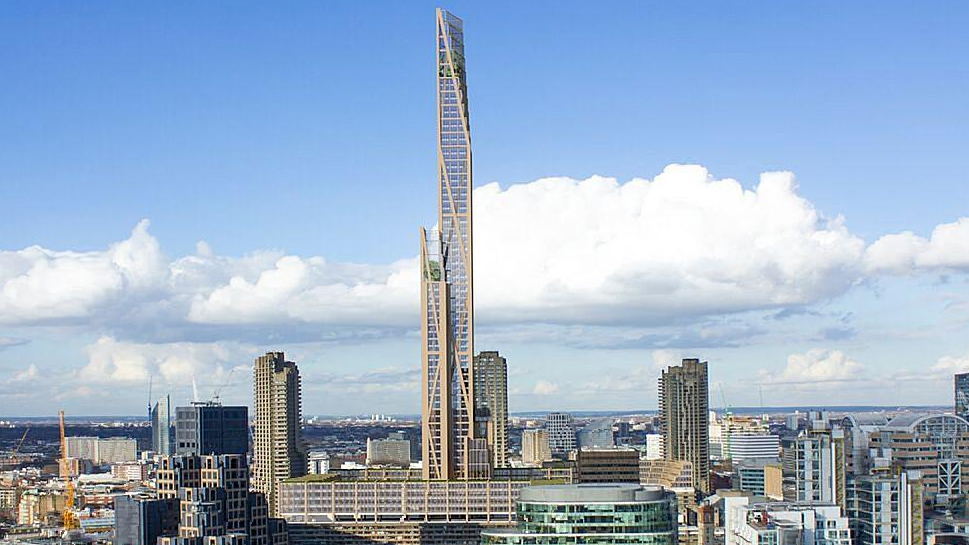Architects want to build a wooden skyscraper in the centre of London
Three hundred metres and 80 stories high

Researchers at the University of Cambridge have presented London mayor Boris Johnson with plans for an 80-storey timber skyscraper that could be built in the centre of London.
The skyscraper would be situated in the Barbican Estate - a residential area built in the 1960s and 1970s over an area devastated by WW2 bombing. The Barbican's concrete structures are often held up as an example of British brutalist architecture.
The researchers' proposal calls for a 300-metre-tall building, containing 1,000 residential units in a million-square-foot mixed use tower and mid-rise terraces. If constructed, it would become the second-tallest building in the capital, after the 310-metre-tall Shard. It was also dwarf the world's tallest timber building today - a 14-storey apartment building in Bergen, Norway.
Fire Regulations
Timber is gaining fans in the architecture community for a variety of reasons. It's a renewable resource, it's cheaper and faster to put together than concrete and steel, and it significantly reduces the overall weight of buildings. The Cambridge researchers also promise that the proposed building would also meet or exceed every existing fire regulation in place.
"If London is going to survive it needs to increasingly densify," said Michael Ramage, Director of Cambridge's Centre for Natural Material Innovation.
"One way is taller buildings. We believe people have a greater affinity for taller buildings in natural materials rather than steel and concrete towers."
Rainforests
You don't need to worry about the rainforests - the type of wood that would be used for the tower is regarded as a "crop", and the amount of crop forest in the world is expanding. Canada, Cambridge's researchers' say, could alone produce more than 15 billion square metres of crop forest in the next 70 years, enough to house a billion people.
Sign up for breaking news, reviews, opinion, top tech deals, and more.
Ramage added: "We've designed the architecture and engineering and demonstrated it will stand, but this is at a scale no one has attempted to build before. We are developing a new understanding of primary challenges in structure and construction.
"There is a lot of work ahead, but we are confident of meeting all the challenges before us."
